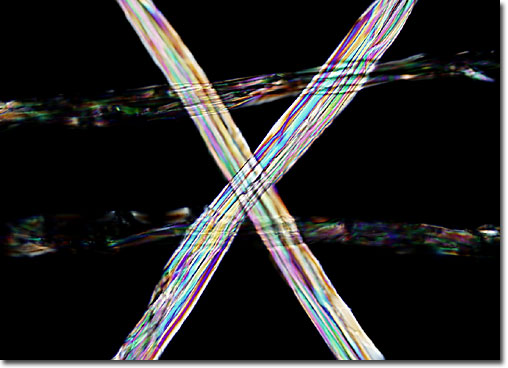|
Today, the larvae of several moth species belonging to the genus Bombyx produce most commercial silk, although other creatures, such as spiders, can produce a similar animal fiber. Domesticated for an extensive period of time, these larvae, commonly known as silkworms, have lost the ability to survive in the wild, though presumably related species may still be found in nature. When ready for metamorphosis, each silkworm spins a cocoon that consists of a single long strand held together by a gummy substance called sericin. Usually the cocoons are steamed or heated in order to stem larval development and are then unwound, or reeled, via mechanical means. Subsequently, in order to produce thicker, more widely useable yarns, the reeled silk is often thrown, a process that involves the twisting together of several strands of the fiber.
|
